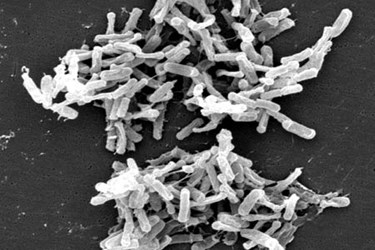Bacterial 'Biosurgery' Shrinks Tumor In Human Patient
By Chuck Seegert, Ph.D.

Bacteria generally get a bad rap, especially in the field of medicine, but the same properties that make them harmful may also improve outcomes in certain tumors.
Cancerous tumors are generally poorly developed compared to normal tissues. Their vasculature is often haphazardly arranged, leading to a poorly oxygenated region in the tumor’s interior. This area historically has been one of the toughest to impact with chemotherapies and radiation therapies, which count on cell turnover, or cellular activity, to induce cell death.
In these poorly oxygenated regions, cancer cells are relatively static and don’t grow, but for bacteria it’s different. Injecting bacteria into these portions of tumors provides an environment where they thrive and multiply at the tumor’s expense. So, where the lack of oxygen inside tumors is considered a weakness with current therapeutic technologies, it is an exploitable advantage for bacteria.
Bacteria “love areas of low oxygen,” said Saurabh Saha, a cancer researcher at BioMed Valley Discoveries Inc. in Kansas City, MO, in a recent press release from the American Association for the Advancement of Science. “They grow and divide and kill the cancer cells.”
Saha is a co-author in a new study, which recently appeared online in Science Translational Medicine. Results of the study showed that the injection of Clostridium novyi (C. novyi-NT) induced tumoral shrinkage in rats, dogs, and even a human patient. In the population of dogs, six of 16 showed significant responses to the treatment, and some of them even completely resolved. In the clinical case included in the study, there was a marked reduction in a tumor within the patient’s bone and in areas surrounding the bone.
Tumor shrinkage caused by bacterial injection has been termed “biosurgery,” and the limitations in chemotherapy and radiation make it attractive for certain tumors. The researchers theorize that injecting bacteria into tumors can generate enzymes that break down the interior of the cancerous growth, the products of which are then consumed by the bacteria, according to the press release.
While this technology has shown promise in this recent study, it isn’t a new concept —it was actually tested close to 200 years ago. According to the press release, a New York surgeon named William Coley injected cancer patients with Streptococcus bacteria to fight the disease. After some adverse events related to infections, however, he switched to attenuated, or dead bacteria. A look back at the results showed that his methods were nearly as successful as other modern methods, but it was abandoned when chemotherapy and radiation came into widespread use.
